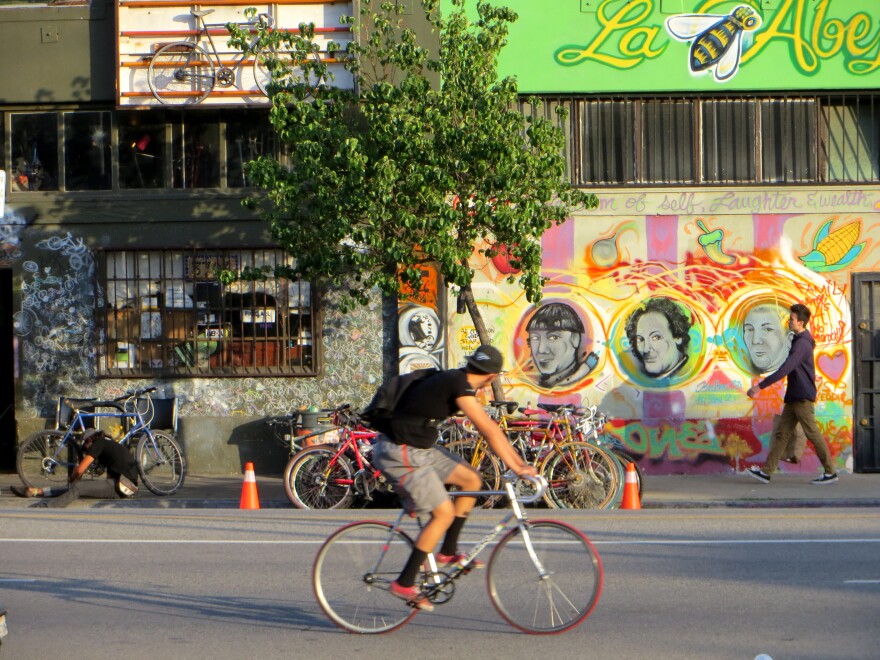With our free press under threat and federal funding for public media gone, your support matters more than ever. Help keep the LAist newsroom strong, become a monthly member or increase your support today.
Watch a decade of growth in LA's bike infrastructure

As we reported last week, you can't bike from one end of the city to the other on marked bike paths in many places - but the Los Angeles Department of Transportation said the bike network has been growing at a rapid clip for a decade, and provided data to back it up.
The LADOT maintains a bike map on its website, but doesn't typically release the raw data behind it to the public. But for this story, the agency shared the latest data—current as of April 1—and we're posting it to Github.
The data show that, in 2005, the city of Los Angeles had 245 miles of bike infrastructure: bike lanes, bike paths and streets where drivers are alerted to share the road by bike signs and markings.
In the decade since then, the system had more than doubled to 562.25 miles of bike lanes, paths and routes. You can watch the growth in this animated GIF:
For our story last week on gaps in L.A.'s bike network, we used Los Angeles County Metro's data on bikeways, which stops in 2012.
The LADOT data offer a more recent picture. The city has added 172 miles of bike streets since 2012.
"We have come a long way since 2012," said Rubina Ghazarian, LADOT's bicycle coordinator.
Yet many of the gaps in L.A.'s bike infrastructure persist: you still can't get downtown from Echo Park on designated bike streets today. Across the city, from the San Fernando Valley to South Los Angeles, many bike streets are fragments that stop and start without connecting to other bike-friendly streets.
And just because a street has a bike lane or is designated a bike street doesn't necessarily make it a safe ride for for bicyclists. Some Angelenos still set out their trash cans in bike lanes or park in them.
Each part of the network is not equal. Paths are safe for bicyclists because they are physically separate from cars. Lanes are marked for bikes, and cars aren't supposed to drive on them but have to cross them to turn. Routes are streets where drivers are asked to coexist with bicyclists.
The under-construction Reseda "cycletrack" isn't reflected in this data. When completed, that will be the city's first "parking protected" bike lane, Ghazarian said.
The lanes in Reseda flip the typical orientation of a bike lane: cars park next to traffic, and the cycletrack goes between the parked cars and the sidewalk. There's even a buffer between the cycletrack and parked cars.
This story is part of Transportation Nation, a public radio reporting project that combines the work of multiple newsrooms to provide coverage of how we build, rebuild and get around the nation. To read other Transportation Nation stories, click here. Let us know what you think in the comments below, on KPCC's Facebook page or on Twitter (@KPCC).







